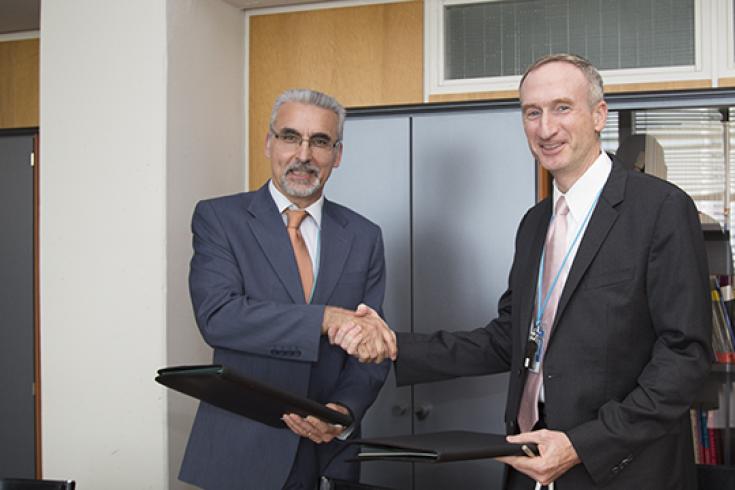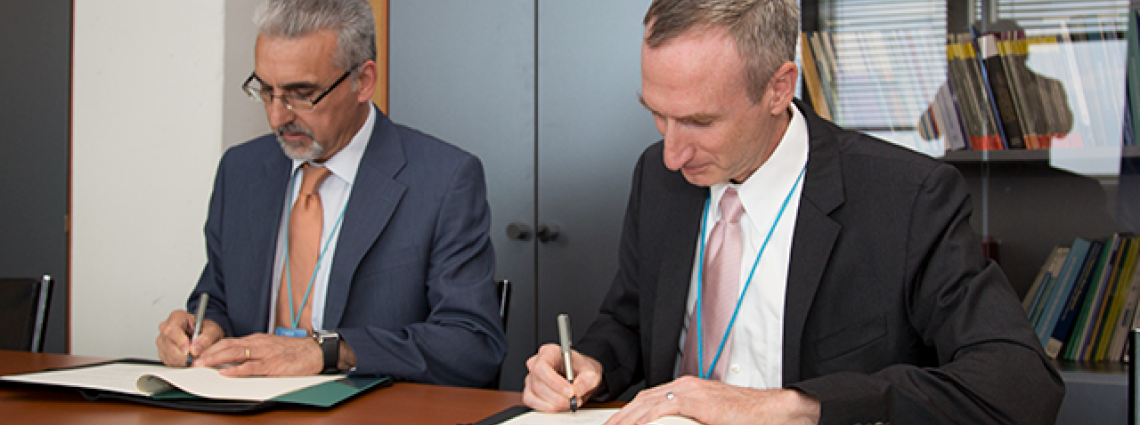IAEA & CTBTO Sign Practical Arrangement on Nuclear Emergencies
30 June 2016
IAEA Head of Nuclear Safety and Security, Juan Carlos Lentijo and CTBTO International Data Centre Director, Randy Bell, signed the arrangement on behalf of their organizations.

IAEA Head Nuclear Safety and Security, Juan Carlos Lentijo (left) and CTBTO Director International Data Centre Randy Bell (right).
These practical arrangements streamline the process of getting needed information to the right organisations during emergencies. Each organisation contributes its specialised knowledge or data, in keeping with its area of expertise.
This is a very good step to promote and enhance cooperation.
The CTBTO has been a formal member of the IACRNE since 2012 and jointly sponsors the JPlan. The CTBT shared its monitoring data and analysis reports with the IACRNE in 2011 during the Daiichi nuclear power plant accident in Fukushima. At the time, these atmospheric radionuclide observations were used by the IAEA, the World Meteorological Organization (WMO), and other IACRNE organizations to track radiation, monitor levels of radioactivity, and helped prepare accurate public health advisories.
Currently, the IMS includes 283 operational monitoring stations (of a planned total of 337 facilities worldwide), 63 of which are radionuclide sensors. Data from the stations is sent in real-time to the International Data Centre in Vienna, Austria for processing and analysis. The system is designed to detect nuclear blasts, but also picks up a vast amount of data that are used for a wide range of civil and scientific purposes.
Fukushima animation
30 Jun 2016
